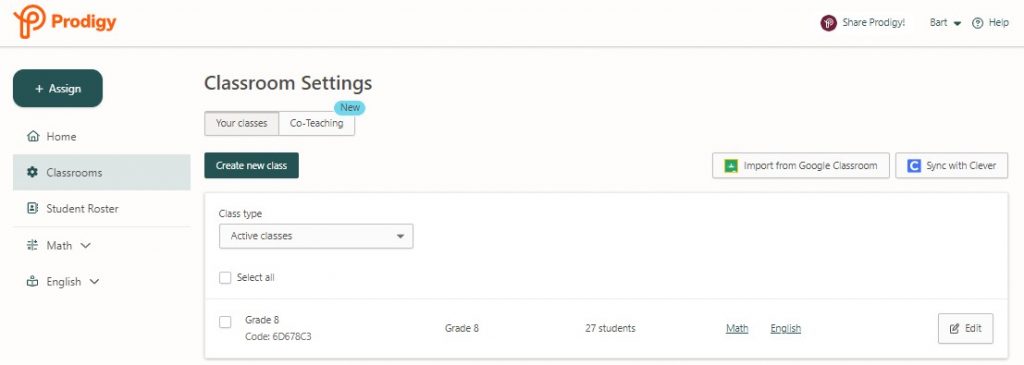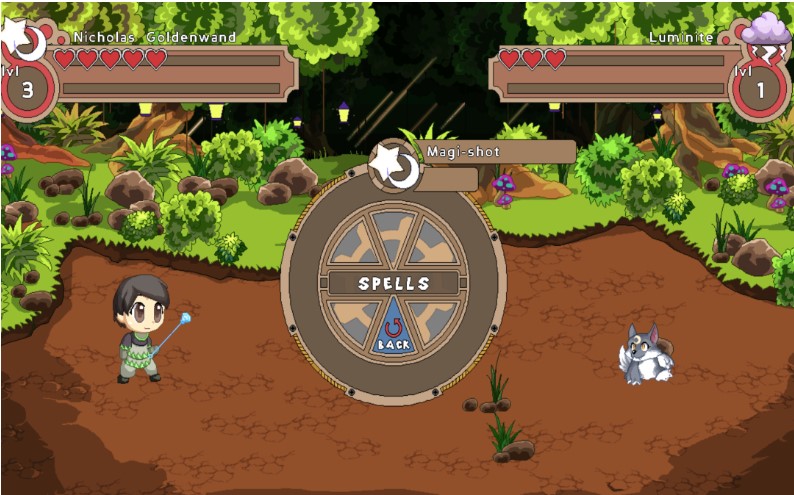Thanks to the timing of this week’s topic, I will be going into the vault for a reflection of a tech based assessment tool. I have been working with an intern this term, so I will be looking back to a tool that I have used earlier this school year, as well as in the past. For that, I present Prodigy.
Why Prodigy?
I had been familiar with Mathletics, using it for years as supplemental work for students who had worked through what was assigned, as a formative assessment tool, and even as a source for summative assessment data. Prodigy was something that I had heard of from some colleagues, but I stayed away from it because I had the one thing (Mathletics) that our school was paying for. When I finally investigated Prodigy, I immediately thought of the students who would be pulled in because of the gamification elements, something that Mathletics was missing. Further exploration and conversation with colleagues showed me that I could use this free tool to attain the same kind of data that I was getting from Mathletics, in a way that was appealing to more (not all) students.
Set Up
Setting up Prodigy with the class was relatively easy. I posted a link through our Google Classroom, gave students the class code (I could have added individual email accounts), and directed students to log in through their school provided Google account. The website also has printable log in info that I gave to students who chronically could not remember how to log in. That was the biggest challenge that I faced in setting up Prodigy with the class – getting the students logged in with their school account instead of a personal account. When students log in without their school account, their progress and data does not show up on my dashboard, making it impossible for me to monitor.

Student Response
I have found that the game-based style – battles via math questions – pulled in more students than the “test” style that Mathletics used. In Grades 4-6, almost all of the students were eager to get on to Prodigy and put their knowledge or understanding to the test. Grade 7 and 8 math classes did not have the same appeal on the whole, but I have found that the male identifying students are more likely to be interested, as well as students who are into fantasy-based video games. Some students have needed to be monitored that Prodigy was not being used outside of math or other permitted time. Still, as expected, there is a group of students every year who are not pulled in and would rather stick to paper and pencil math work.

My Prodigy Deployment
I used Prodigy in a few different ways with the math classes that I taught from Grades 4 to 8.
As an extension of assigned work, I was able to assign questions related to the outcome we were learning about in class. When students would finish their individual or small group work, they could move on to Prodigy. This gave me another opportunity to monitor student progress, and provided students with immediate feedback – formative assessment. I also used Prodigy as a review tool for students prior to them completing an assessment.
In some instances, students who missed a fair amount of school in person would be able to use Prodigy to show what they knew. I would use the data from Prodigy in combination with conversations with students and work that they would have completed as summative assessments.
By having students complete placement assessments in September and January, I was also able to get a more broad picture of their math knowledge. When possible, I would assign a “plan” or “assessment” connected to the outcome we had been learning about.

Cheers and Jeers
Aside from the pros and cons of Prodigy that are sprinkled throughout my post above, here are some other things that I liked or disliked about Prodigy:
Pros
- Game-based assessment = generally high interest
- Hints provided for assigned questions
- Algorithm adjusts questions to meet student abilities
- Free
- Google login and class code make for easy connection to the Google Classroom
- Accessibility – read-aloud feature
- Parents can connect with student accounts
- The formative assessment can help give insight regarding student understanding in a low-pressure situation
Cons
- Students able to login with accounts not connected to the class making for data that is unusable
- Saskatchewan curriculum is not connected to the website, so there is work looking through the curriculums that are to find matches
- Not every student likes the theme of the game-based site.
- Students may get caught up in the “game” and be more worried about leveling up or advancing, instead of giving their own honest work
- As the algorithm adjusts questions, students may find the work becoming “too difficult”, especially when comparing with their friends.
Many of the pros that I have found in using Prodigy, align with what the Office of Educational Technology article, Measures of Learning, identified:
- Provides real-time feedback – for both the student and myself
- Increases accessibility – assistive technology – read-aloud feature
- Adapts to learner ability and knowledge – algorithms to adjust the difficulty of questions on the basis of student responses
- Embedded with the learning process – game-based assessment
Formative (AND) or Summative
In some cases, I have used the tech based assessment as an additional product in the triangulation of data for summative assessment. Over the last couple of years, where students miss extended periods of school, this has been helpful in assessment data for progress reports. In addition to providing students with a digital way to practice math skills and demonstrate an understanding of outcomes, Prodigy has been a great tool to monitor student learning in a formative way. By having students be able to work independently (or quasi), it allows me to work with students in one-on-one or small group scenarios and still be able to get a read on how all students are faring with the tasks and outcome assigned.
I am still using Prodigy in these ways this year, but our school has also purchased IXL accounts for math and I am looking forward to learning about that. Has anyone else used Prodigy in a similar or different way? Any tips on IXL use?
Thanks for sharing your blog post. I really like your experience with Prodigy and you used it in different ways in different math classes. I am also a math teacher and I will also apply this method for the assessment of students in math classes. I think it will make teaching-learning more effective. moreover, Prodigy offers an engaging in-game experience while students practice important math skills required for their grade level. Students answer skill-building math questions in an engaging online environment.
A very thorough summary of Prodigy, Bart! The PROS you list – particularly student engagement – are why I always include Prodigy in my classes as an extra. I do have two personal concerns with it though (and these are largely my own failings) 1. It seems like only my early finishers (aka: math gurus) benefit from Prodigy time. I have a few students who really struggle with math, so just completing assignments and RTI sessions seems to fill up every minute. 2. I don’t check the data as frequently as I should. Again, it seems like I use Prodigy largely as a time filler for accelerated students. Your post has made me rethink that and I’ll be looking at how I can employ Prodigy more efficiently and equitably this week. Thanks!